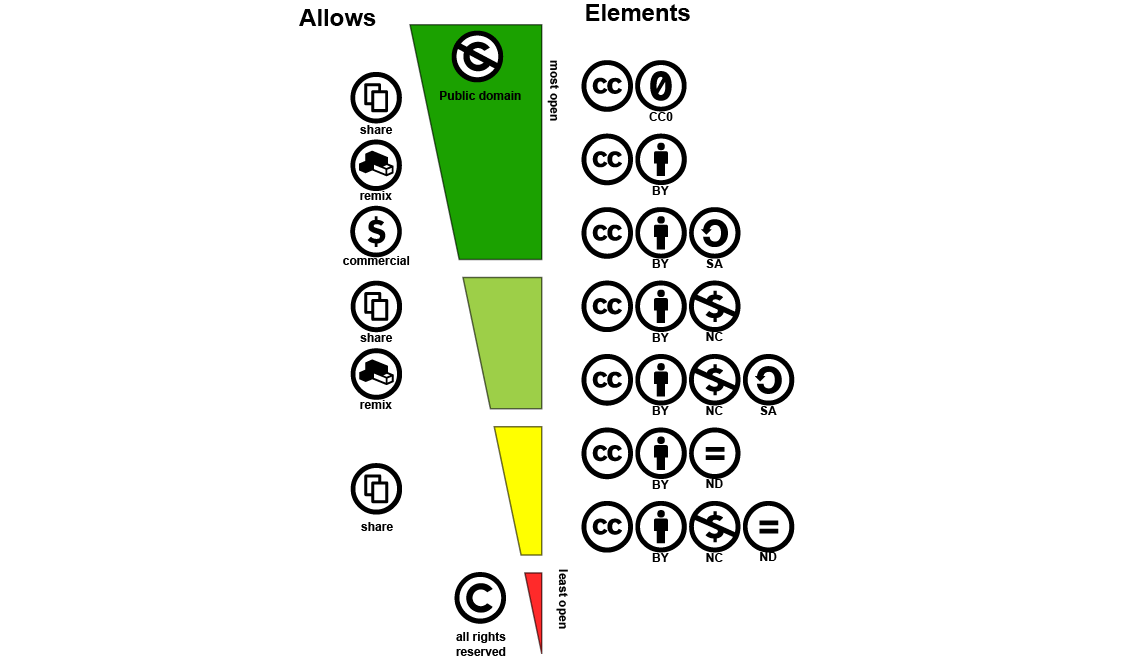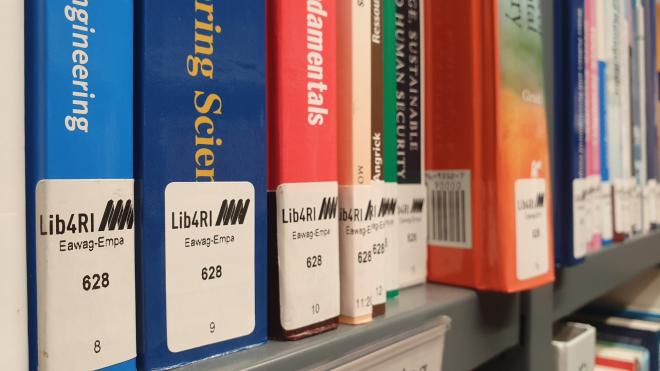Want to share your screen? See the person you're talking to? Contact us via digital library desk! We will be with you shortly.
Monday-Friday


Want to share your screen? See the person you're talking to? Contact us via digital library desk! We will be with you shortly.
Monday-Friday


Creative Commons licences are among the most widely used public licences. They are an important pillar for Open Access (OA) and Open Science. Lib4RI recommends using CC BY for all your publications.
CC licences allow re-use of work without explicit permission from the copyright holder. Attribution of the original author is mandatory. Some further specifications may apply within the specifications contained in the licence.
The specifications are defined by modular combinations of BY and optional elements (SA, NC and ND). The specifications determine the degree of openness of the licence from very open (CC BY) to very restricted (CC BY-SA-NC-ND). In the next section, we highlight benefits of CC BY and drawbacks of other licences.
Image

| BY | Attribution Give author attribution and link to licence | mandatory |
Image

| SA | ShareAlike Derivatives must be made available under a similar licence | optional |
Image

| NC | NonCommercial Re-use is only permitted for non-commercial purposes | optional |
Image

| ND | NoDerivatives The work must not be modified | optional |
When you decide to publish an article under a CC licence, you will be asked by the publisher which licence you want to choose. We strongly recommend using the CC BY licence.
Adding further elements to the licence controls the context in which the material can be re-used. However, these come with severe drawbacks. As a result, you sometimes even get the opposite of what you wanted to achieve. Most prominently this is the case with the frequently misinterpreted "non-commercial" element. Below we briefly outline consequences and problems with the additional elements.
test

Some publishers suggest using a CC BY-NC-ND licence. However, this will restrict re-use to an extent that is almost equivalent to a copyright licence. Therefore, applying CC BY-NC-ND is discouraged for open scientific publications.
Once a work has been published under a particular licence, this licence cannot be revoked. Therefore, it is important to consider whether the selected specifications will permit the desired forms of use before issuing the licence.
A licence can be created with only a few clicks in the licence chooser on the Creative Commons website. This tool will guide you in simple steps towards the right licence for your purpose.
The licence chooser tool will provide textual, HTML and machine-readable XMP versions to mark your content. All you have to do is copy and paste the output where otherwise copyright informations would be placed, e.g. to a cover page or a footer. It is essential to include the link to the licence as well, either as hyperlink or in textual form.
Example CC BY licence as HTML output for websites:
This work is licensed under CC BY 4.0
Example CC BY licence in textual form for print/media:
This work is licensed under CC BY 4.0. To view a copy of this license, visit http://creativecommons.org/licenses/by/4.0/
Optionally, year of creation, title and author can be added, as well as links to the work itself and the author's website.
To re-use content under a CC BY licence, first make sure that any additional specifications in the original licence (SA, NC, ND) allow your particular re-use.
You must retain the information the creator of the original work supplies and provide an indication if you modified the licenced material. Refer to the original licence, either in textual form or by including a URI or hyperlink to this licence. The conditions for re-use must be satisfied "(...) in a reasonable manner based on the medium, means, and context (...)" in which the licenced material is shared.
attributions
Best practice attribution suggests to follow the TASL-Scheme, that is Title - Author - Source - Licence.
Following the TASL scheme, the attribution would go as shown in the caption:

The text in the caption contains the core elements:
Any modification of the picture, such as cropping or colour filters, should be indicated as well.

In some cases, the TASL scheme will not be suitable for your particular purpose. For example, an illustration that is re-used from a scientific publication does not necessarily have a title. In a journal article, a good attribution could then be for example:
Instead of the title of a work, the subject is indicated. The author is referenced as in the example above and the source will be included just like any other citation in the references. The licences are also referenced including the specifications and version number (4.0).